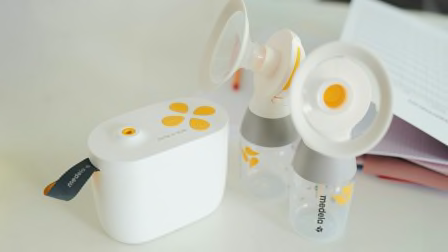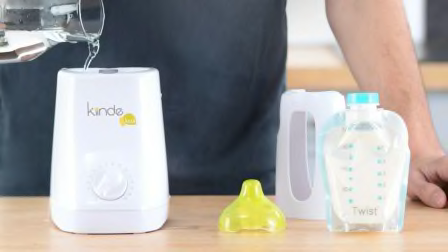9 Things That Truly Helped Make Breastfeeding Easier
Breastfeeding essentials to try, according to a mom of five
When you shop through retailer links on our site, we may earn affiliate commissions. 100% of the fees we collect are used to support our nonprofit mission. Learn more.

As a mom of five, I have been pregnant or breastfeeding for all but a few months of the past decade. I’ve learned that there are a whole lot of products out there promising an easier road and a select few breastfeeding essentials that I couldn’t have nursed without.
While many people think that breastfeeding is a “natural” process that involves hovering your baby by your breast and letting them do the rest, for some people, it’s far from that easy. According to the Centers for Disease Control and Prevention, 84.1 percent of children born in 2021 were breastfed at some point, but by 6 months of age, that dropped to 59.8 percent and fell even further, to 39.5 percent, by the time they were 1 year old.
The fact that most people start out breastfeeding, but just over half are still going at 6 months, suggests that they might not have the support and guidance to continue as long as they want to. A 2022 survey by What to Expect found that almost a quarter of the participants said they might have breastfed longer had they felt more supported.
If you choose to breastfeed for any length of time, the right support, from products to people, can make it easier. La Leche League says that breastfeeding people need and deserve physical and emotional caregiving, as well as respect for the time commitment breastfeeding can require, especially in the early weeks and months. A 2022 study found that home visits, in-person guidance, and counseling can also help when challenges arise.
You can prepare for breastfeeding with some must-try products, like a sturdy breast pump, to make things a bit easier. Here’s what I would buy all over again.
A Workhorse Breast Pump
Spectra S2 Plus Double Electric Breast Pump
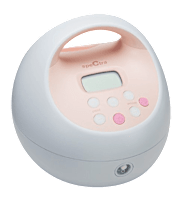
Not all breast pumps are made equal. The Spectra S2 Plus double electric pump was the one I relied on to feed my babies, thanks to its powerful and consistent motor and comfortable settings. I wish I’d known earlier that a pump for each pregnancy and related pumping supplies are often covered by insurance.
A Pressure-Relief Breast Pump
Elvie Pump
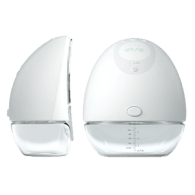
Wearable breast pumps can be helpful to relieve pressure or express milk between major nursing or pumping sessions. Wearable pumps like the Elvie, my personal favorite, are great for throwing into your bra on the go—when you’re headed to date night, say, or on a quick break at work.
“I would always travel with the Elvie, as well as my Medela Freestyle Hands-free pump,” says Abbey Donnell, founder and CEO at Work & Mother, a startup that provides lactation suites in office buildings. “The Elvie and I spent a lot of quality time in airplanes and Ubers together.” She would rotate between the two pumps, which helped her maximize output.
A single-side manual pump can be a useful backup, too. “A hand pump is good to have on hand for quick last-minute pumping sessions and also if there is a power failure,” says Jessica Madden, MD, medical director at Aeroflow Breast Pumps and a pediatrician and neonatologist who has been a lactation consultant for over 15 years. “The Medela Harmony (Amazon, Walmart) has been the one I have recommended since I first used it almost 20 years ago, because it’s portable, easy to use, and it’s easy to find replacement parts.”
I’ve also tried—and liked—the Annabella (Annabella, Amazon), a portable, single-side, battery-operated pump that is claimed to simulate a baby’s tongue.
Protective Cups
Silverette Original Silver Nursing Cups
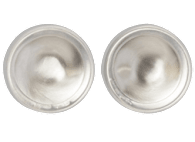
If your nipples are raw, chapped, and generally feel as if they just can’t be touched by anything, not even a T-shirt, I have two pieces of advice for you. First, you should reach out to your care provider or a lactation consultant ASAP for support because nipple pain when nursing can be a sign of an improper latch. In the meantime, silver nursing cups, such as Silverettes, can be lifesavers. When I first encountered these, I had been dealing with a breast infection and thrush, and my nipples felt too painful to even touch, let alone nurse. Used between feeding sessions, these cooling, protective cups slip into your bra and create a little space for your nipple to hang out without touching anything or rubbing on a bra or shirt.
A Nursing Pillow for Support
My Brest Friend Deluxe Nursing Pillow
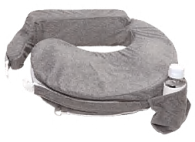
A nursing pillow was a must when nursing each of my kids for all 10 years of their babyhood. A firm, structured pillow can offer a break for the muscles in your arms and shoulders, which can become tense and strained from overuse during nursing. New safety regulations that took effect in April 2025 require nursing pillows to be firmer and flatter and have a wider opening than previous models. Check the new changes to make sure yours is safe.
A Milk Catcher
Haakaa Generation 2 Silicone Breast Pump with Suction Base
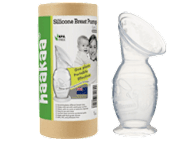
It might come as a surprise to newly nursing parents that while your baby is feeding on one side, it’s common for the other side to experience “let down” simultaneously. So what do you do with the milk leaking into your bra? Catch it.
I was always someone who made “just enough” milk and never had a large freezer stash of extra. The way I made enough for date nights away from the baby was thanks to the Haakaa, which gently suctions onto your breast to catch milk.
“This helped me build a small reserve before going back to work, without having to add a bunch of extra pumping sessions on top of nursing. Pure gold,” Donnell says.
While my Haakaa milk catcher was essential for conserving every last drop of precious liquid gold, multiple lactation consultants I worked with cautioned me against overusing this product because it could teach my body to increase the supply, thinking I was demanding milk from the other side as well. So I used it for just a few minutes. You can also find milk catcher “cups” that nest in your bra to collect milk without creating additional suction.
A Nursing Chair You Love
Nurture& Glider Plus
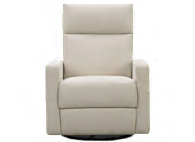
You’d better get comfy. Assuming an average of 30 to 45 minutes per nursing session, and following the CDC’s recommendations about how often to breastfeed, a parent could expect to spend at least 1,360 hours nursing in the first year. (Some full-time jobs add up to around 2,000 hours per year, for reference.)
So if you want to skip all the onesies and baby socks at your shower, have your friends and family pitch in to buy the Glider Plus from Nurture&. It has an extra-wide seat perfect for parents with other littles cuddling up to them. And there’s a power recline button so that you can lean back when those 3 a.m. feedings get to you.
You can also consider a traditional rocker or glider. Just make sure there’s solid elbow support because your arms will definitely tire holding those babies as they grow.
A Supportive, Well-Designed Nursing Bra
Hatch Everyday Nursing Bra
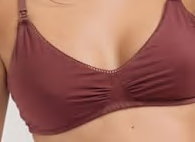
When your baby is nursing frequently, a nursing bra offers easy access. One of my favorites was Hatch’s Everyday Nursing Bra, which felt less like a sleeping bra and more like a bralette I’d wear anyway, with medium support and coverage. It also comes in great colors in addition to the classic beige, black, and white.
This ultra-supportive underwire nursing bra, another favorite (Amazon), offers extra support and coverage as your breasts get a little fuller and heavier with nursing.
When you shop for a nursing bra, don’t forget to make sure it passes the one-hand test, because that’s all you’ll have available most of the time as a new parent.
In addition, you might consider two-layer nursing shirts, especially if you prefer to nurse without a cover. These specially designed shirts can help you be discreet while maintaining easy access for nursing. But don’t forget—you totally have the right to nurse in public as discreetly or nondiscreetly as you want!
A Hydration Station . . . With Snacks
Owala FreeSip
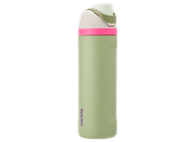
Nursing makes you ravenous. You’ll feel much more prepared to settle in for a session with a nearby table, tray, or little cart with your must-haves. Typically, this should include a go-to big cup for water, snacks, nursing pads, and maybe even a phone charger or book. I liked protein bars, fruit, and homemade oatmeal balls.
“Invest in a high-quality insulated water bottle that will keep beverages cold for hours,” Madden says. “My favorite bottle is the 24-ounce Owala FreeSip because it’s easy to tote around, fits in most cup holders, and comes in super-cute color combos.” She also likes Earth Mama Organic Nipple Butter (Earth Mama) and disposable nursing pads, which you can add to your station. “My ‘go-to’ brand is Frida Baby All-Day Dry (Frida, BuyBuyBaby, and Target) nursing pads because they are easy to find in stores, affordable, and work just as well as more expensive brands.”
A Great Support System
Even more than any gadget you can buy or register for, it’s essential to have somewhere to turn when nursing gets difficult. Whether you reach out to a lactation consultant, your best friend, or even an online group for support, you deserve breastfeeding support and community where you can commiserate and get advice.



















